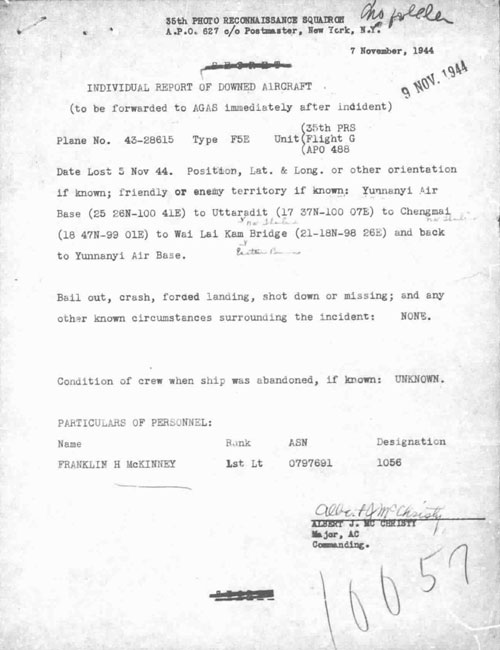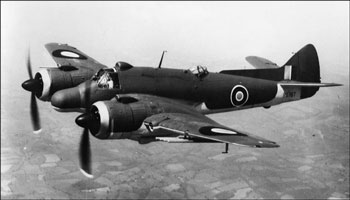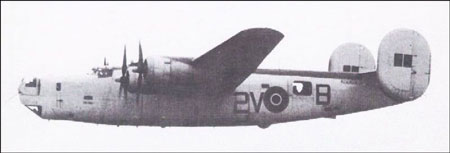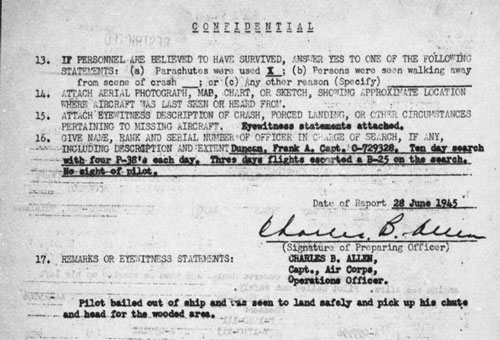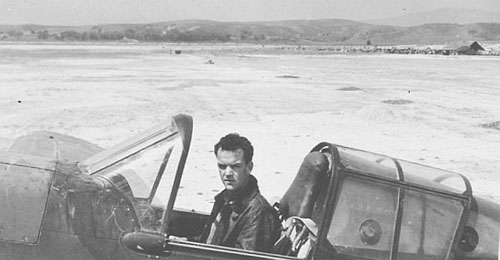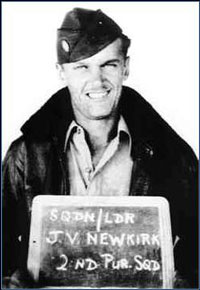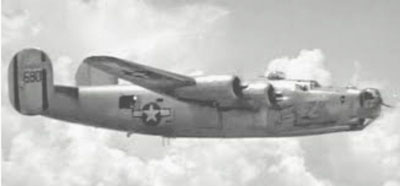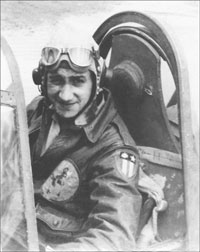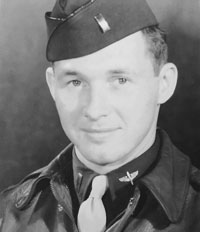 05 Nov 1944: USAAF 1Lt Franklin H McKinney was part of Flight “G”, 35th Photo Reconnaissance Squadron (PRS), 14th Air Force, home based at Yunnanyi (Beitun Airfield), Yunnan, China.1
05 Nov 1944: USAAF 1Lt Franklin H McKinney was part of Flight “G”, 35th Photo Reconnaissance Squadron (PRS), 14th Air Force, home based at Yunnanyi (Beitun Airfield), Yunnan, China.1
He flew an F5E, a P-38 stripped of armament to minimize weight and make room for high altitude aerial photography equipment: 2
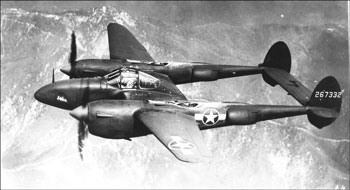 On this date, McKinney’s mission was to photograph Uttaradit and Chiang Mai in Thailand, then Wai Lai Kam Bridge in Burma, and return to Yunnanyi. The planned trip covered around 1,800 km with a total flight time of about five hours. 3
On this date, McKinney’s mission was to photograph Uttaradit and Chiang Mai in Thailand, then Wai Lai Kam Bridge in Burma, and return to Yunnanyi. The planned trip covered around 1,800 km with a total flight time of about five hours. 3
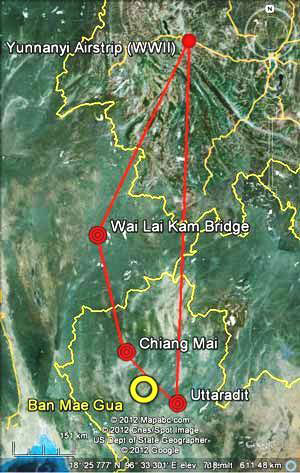 A reconstruction of McKinney’s flight had him taking off at 10:15 am, proceeding to his first destination, Uttaradit. From there, he flew on towards Chiang Mai, his second objective that day. About 85 km WNW of Uttaradit, he encountered a thunderstorm. Lightning struck his plane, igniting its fuel and bringing the plane down in Mae Gua (Kua) Subdistrict of Lampang Province. McKinney was killed.
A reconstruction of McKinney’s flight had him taking off at 10:15 am, proceeding to his first destination, Uttaradit. From there, he flew on towards Chiang Mai, his second objective that day. About 85 km WNW of Uttaradit, he encountered a thunderstorm. Lightning struck his plane, igniting its fuel and bringing the plane down in Mae Gua (Kua) Subdistrict of Lampang Province. McKinney was killed.
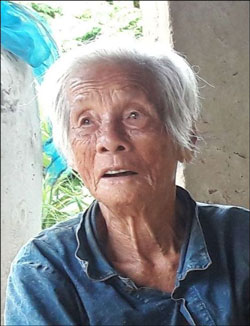 Living in Mae Kua at that time, as she does now in her late 90s, a young Ms Fong Inma (ฟอง อินมา), 4 daughter-in-law of the Moo 4 headman, Kum Inma (คำ อินมา), recalls a tremendous explosion at the time that caused cattle to break their tethers. Her father-in-law rushed to the site, well-marked by a column of smoke, but it was obvious that there were no survivors. Subsequently, he oversaw transport of the plane’s wreckage to their house by oxcart where it was stored underneath. Ms Fong described blackened metal (ie, fire damaged), and very large metal items, suggesting that the engines were included in the collected wreckage. She recalls that the plane had American markings. The pilot’s body had apparently been dismembered in the crash and the remains were buried at the site.
Living in Mae Kua at that time, as she does now in her late 90s, a young Ms Fong Inma (ฟอง อินมา), 4 daughter-in-law of the Moo 4 headman, Kum Inma (คำ อินมา), recalls a tremendous explosion at the time that caused cattle to break their tethers. Her father-in-law rushed to the site, well-marked by a column of smoke, but it was obvious that there were no survivors. Subsequently, he oversaw transport of the plane’s wreckage to their house by oxcart where it was stored underneath. Ms Fong described blackened metal (ie, fire damaged), and very large metal items, suggesting that the engines were included in the collected wreckage. She recalls that the plane had American markings. The pilot’s body had apparently been dismembered in the crash and the remains were buried at the site.
Flight Lt Chalermgiat Wattananggoon came from a unit of the Royal Thai Air Force (RTAF) at Lampang Airfield, inspected the wreckage, removed surviving documents, and indicated that the RTAF had otherwise no interest in the remainder of the wreckage. He filed this report: 5
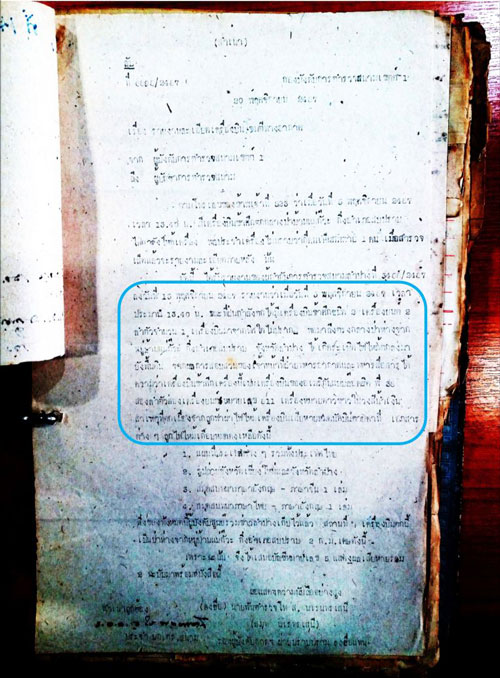 The circled text translates in essence:
The circled text translates in essence:
Around 1340 hours on 05 Nov 1944, a plane with two engines and two tails was flying through a storm. Apparently the plane was hit by lightning. People on the ground heard an explosion and saw a burning plane go down and crash. The location was in a wooded area in Ban Mae Kua, Sop Prab Sub-District, Lampang Province. Subsequent investigation revealed the plane to be a
P-38, with “NUMBER 811” painted on a piece of wreckage. It was also marked with a white star in a dark blue circle. A skull was found in the wreckage. 6
The wreckage continued in storage under the house for about a month before the sheriff of Sop Prap came and collected it with a truck. Presumably the wreckage eventually found its way into a Japanese scrap metal drive.7
At the time, McKinney’s parent USAAF organization located at Yunnanyi was basically powerless to investigate his disappearance which might have been anywhere over a vast expanse of enemy-held jungle and mountainous terrain. He simply never returned from his flight. Dan Jackson writes of “recce” (reconnaissance) aircraft:
Unsurprisingly, the cause of loss remains unknown for eight of the sixteen F-5s reported missing in the China Theater — compared to fewer than 9 percent of aircraft overall. 8
Stripped of armament, the model’s defences lay in speed and altitude:
Capable of flying up to forty-four thousand feet at over four hundred miles per hour, it could fly higher and faster than most anything in the JAAF. 9
McKinney’s unit generated a Missing Air Crew Report (MACR):10
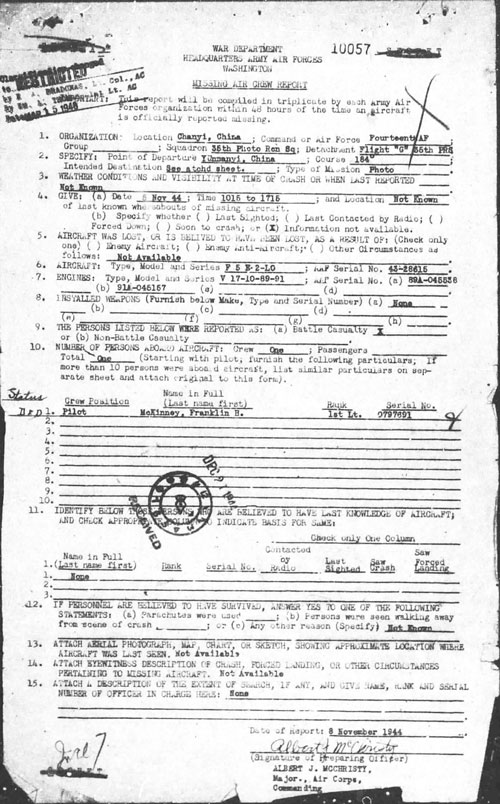 Its page 2 named his destinations:
Its page 2 named his destinations:
 and its page 9 included a summary:
and its page 9 included a summary:
USAAF Chronologies show no activity around Lampang on the date of McKinney’s loss, 05 November 1944. 11
In May 2011, Chalermgiat’s 1944 investigative report was located in the RTAF Archives. 12
In 2014, with the clarification that the “Mae Gua” in the RTAF report of 20 Nov 1944 is currently transliterated as “Mae Kua”, 13 plus history about how the administrative units, villages and subdistrict carrying that name, have evolved over time, trips were made to the area, but were unsuccessful in getting substantive information about an air crash. 14 Since the time of the crash, the site had quickly changed from undeveloped second growth forest to now long-time cultivated rice paddies. After four years, a follow-up visit in Jul 2018 found Ms Fong who could approximately locate the crash site. 15
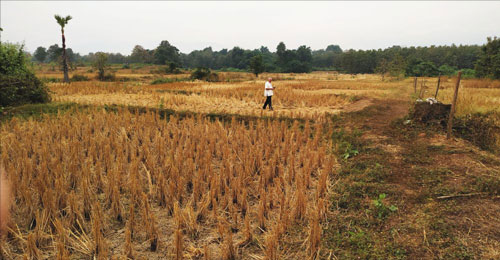 In her recollections, Ms Fong told of a landmark tree close to the crash site, which had been long ago cut down. On 08 Dec 2018, Dan Jackson visited the site and interviewed Ms Fong. 16
In her recollections, Ms Fong told of a landmark tree close to the crash site, which had been long ago cut down. On 08 Dec 2018, Dan Jackson visited the site and interviewed Ms Fong. 16
Dan Jackson forwarded the information to a representative of Detachment 1 of the Defense POW/MIA Accounting Agency (DPAA) in the US Embassy in Bangkok. The agency is tasked with providing “the fullest possible accounting of missing personnel from past conflicts”, including the return of remains of those personnel to US soil. 17 The DPAA representative with staff 18 visited the site on 07 Nov 2019, interviewing Ms Fong and the landowner, Mr Bancha Oodjai (บัญชา อุดใจ).19 Ms Fong repeated her recollections, and Mr Bancha pointed out the general area where he had found fair-sized pieces of aluminum while his father was tilling the paddies. The DPAA representative sent a review of the results of her visit with recommendation for further investigation to the DPAA’s office in Honolulu.
In response, in April 2021, a DPAA team from Honolulu Office 20 visited Mae Kua to verify that information and to determine if a concerted effort to recover possible remains could be justified. The team walked the site looking for visible clues. Finding none, they then swept the area with metal detectors. Numerous “hits” with the detectors were flagged, then probed to find the objects triggering the detectors. The results are visible in the photo below as the numerous white markers (flags). At one concentration of flags, the team anthropologist excavated a one meter square plot to approximately half a meter depth. Spoil from the hole was sieved for objects. In the photo, the group of figures on the right is in the hole, while the group to the left is sieving spoil from the hole.21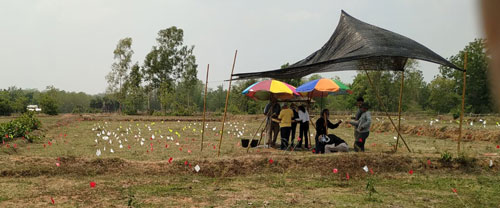
The effort turned up numerous small metal pieces which the team anthropologist said was a common characteristic of crash sites from which wreckage had been salvaged and then picked over. The team was confident that its findings were positive and, on that basis, was to produce a report on them for DPAA Honolulu.
Note that nothing found at the site as yet can identify the type of aircraft that crashed at Mae Kua, much less the specific aircraft. Nor have any human remains been found.
Useful References: In addition to an RTAF report and USAAF Missing Air Crew Report in text above, see also:
Jackson, Daniel, Fallen Tigers (Lexington KY, University Press of Kentucky, 2021), pp 176-177.
Thai PBS video, Missing Air Tiger: The Truth Is Not Dead, which aired 13 Oct 2021. The documentary is in Thai language; an outline in English is available here.
| First published on Internet | ||
| Numerous changes, corrections | ||
| Additions, changes, corrections | ||
- Yunnanyi airstrips. Location per Jackson, Dan, Fallen Tigers (Lexington KY: University Press of Kentucky, 2021), p 176.[↩]
- Photo: Lockheed P-38 Lightning (F-5B) en vol (in flight). The F-5 series, variants of the P-38, is described in: Jackson, Daniel, Famine, Sword, and Fire (Atglen PA: Schiffer, 2015), p 182; and P‑38 Photo Reconnaissance, P-38 National Association and Museum.[↩]
- Map: Extract from Google Earth; annotations by author with Microsoft Publisher.[↩]
- Interview by Wiyada Kantarod and author with Ms Fong at her home in Mae Kua on 05 Jul 2018. Photo: extract from 20180705_160353 of 05 Jul 2018. We were introduced to her by her grand nephew, Seewai Bpunyai (ศรีไว ปันใย):
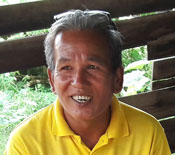
— photo part: 20180705_160353 An employee of the subdistrict office, Seewai was instrumental in finding sources and locating the crash site. Followup interviews with same were conducted on 08 Dec 2018 by Daniel Jackson, Frans Betgem, Jack Eisner; on 07 Nov 2019 with Ms Fong and Mr Bancha by Daniel Jackson and DPAA Detachment 1 team; and on 25 Apr 2021 with same plus Sub-Regional Team One, DPAA (Honolulu).[↩] - Text from Royal Thai Air Force (RTAF) report dated 20 Nov 1944. Discovered by Sakpinit Promthep at the RTAF Museum at Don Muang. in May 2012 (Dan Jackson emails of 01:56 12 Oct 12 and 14:39 25 Oct 12). The officer originating the report, Flight Lt Chalermgiat, (alternate spelling: Chalermkiat Vatthanangkun) piloted one of five Ki-27s confronting Allied aircraft the following week over Lampang and was seriously wounded. He recovered and continued in the RTAF to become its head in 1957.[↩]
- This text (here polished) appears in Steve Darke’s Thai Air Accidents (28 Mar 2021 update), p 3.[↩]
- As described in ชีวิตของมาซาโอะ เชโตะ ผู้ถูกพ่อและญี่ปุ่นทอตทิ้ง เล่ม 1, แปลจาก : Seto Masao no Jinsel (ชีวิตของมาซาโอะ เชโตะ), แปลโดย : บ้ณทิต ประดิษฐานุวงษ์ [Seto, Masao, Life of Masao Seto, Book 1,
p 160 [my ref: 03400 Boggett/Seto xlatn].[↩] - Jackson, Dan, ibid, p 100.[↩]
- Jackson, Dan, Famine, Sword, and Fire: The Liberation of Southwest China in World War II (Atglen, PA: Schiffer, 2015), p 182.[↩]
- Provided by Mike Stow at Accident-Report.com per email of 07:02 21 Nov 2012.[↩]
- The Official Chronology of the US Army Airforce in World War II: 1944. Lt Col Terry Popravak, USAF (retired), of 142FW/HO (and maintaining the website, The 35th Photo Reconnaissance Squadron, clarified that the official USAAF chronology does not list individual aerial photo missions, nor are records reliable in listing unit relocations such as that of his 35PRS (per his email of 1340 09 Feb 2014).[↩]
- Discovered by Sakpinit Promthep, as noted above.[↩]
- See Google Maps, N17°57.14 E99°21.37.[↩]
- 12 and 14 May 2014 with Jiraporn Jacqmin and author. [Ref: \02370_Mae Kua on site rvw.docx][↩]
- Interview with Ms Fong in Mae Kua on 05 Jul 2018, as noted above.[↩]
- Wiyada Kandarod, translator, assisted Dan in the interview. Jack Eisner, Frans Betgem, Sirah Masters, and the author accompanied him in his visit. In appreciation for the villagers’ help in locating the site, Dan presented framed photos of McKinney and an F-5 to Seewai:
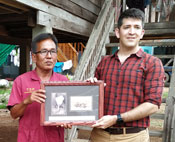
IMG_20181208_132352.jpg[↩] - Principal Deputy Director, DPAA.[↩]
- Maj Klairoong “Puma” Pattumma, with Vina Chhouk, Jared Elison, Benjamart “Apple” Daramart, and Sunan “Jun” Boonjeam visited the site and conducted interviews. Daniel Jackson, Sakpinit Promthep, Wiyada Kantarod, and the author accompanied Detachment 1.[↩]
- The landowner, Bancha Oodjai:

photo part: IMG_ 20191027 _145834.jpg by author Initial contact arranged by Seewai Bpunyai (ศรีไว ปันใย). Interview by Wiyada Kantarod and author with Bancha on site in Mae Kua on 03 Nov 2019. Followup interview with same plus Daniel Jackson and DPAA Detachment 1 team, 07 Nov 2019. Bancha proved to be enthusiastic and cooperative in furthering DPAA efforts; he also pointed out where he believes McKinney’s remains are buried.[↩] - The team from Honolulu was led by Capt Jenavee Viernes and included Blas Colunga, Seth Coulter, Terry Hunter, Tim Kelliher, Dr Kyle McCormick, Ron Minton, Philip Trent. They were assisted by local Detachment 1 personnel including Klairoong Pattumma, Sunan Boonjeam, Suthipong Pruekpongrat. Wiyada Kantarod and the author also assisted.[↩]
- Extract of photo IMG_20210425_134413 by author.[↩]
